The Garmin Approach R10 made a massive splash when it hit the market in 2021. It was the first-ever golf launch monitor in the under-$1,000 category that included accurate ball and club data and could be used as a golf simulator.
At the time, there was nothing else like it.
But now there are several competing devices. Actually, you could call some of them copycats of the R10.
In any case, it’s time for an updated look at the trendsetting Garmin R10.
The R10 may have started this product class of affordable golf launch monitors. But does it still rule that class?
WIth newer options like the Rapsodo MLM2PRO, Voice Caddie SC4 Pro, and the Square Golf Launch Monitor, is the R10 still the best choice for budget-conscious golfers?
Or, has it been passed by?
Let’s dive in and find out.
First Impressions of the Garmin R10 Launch Monitor
When the R10 was first released, its presentation and packaging stood out.
In fact, I initially was pretty floored.
I mean, the design of the R10 is so sleek and compact. It’s roughly the size of a deck of cards. Even now, the size of this device for all that it can do remains incredibly impressive.
But when I first saw that—like I said, there had never been anything like it—I believe the term I blurted out in my initial review was, “badass.”
And it still is. The included hard-shell carrying case feels premium, giving off a high-end vibe that makes a great first impression.
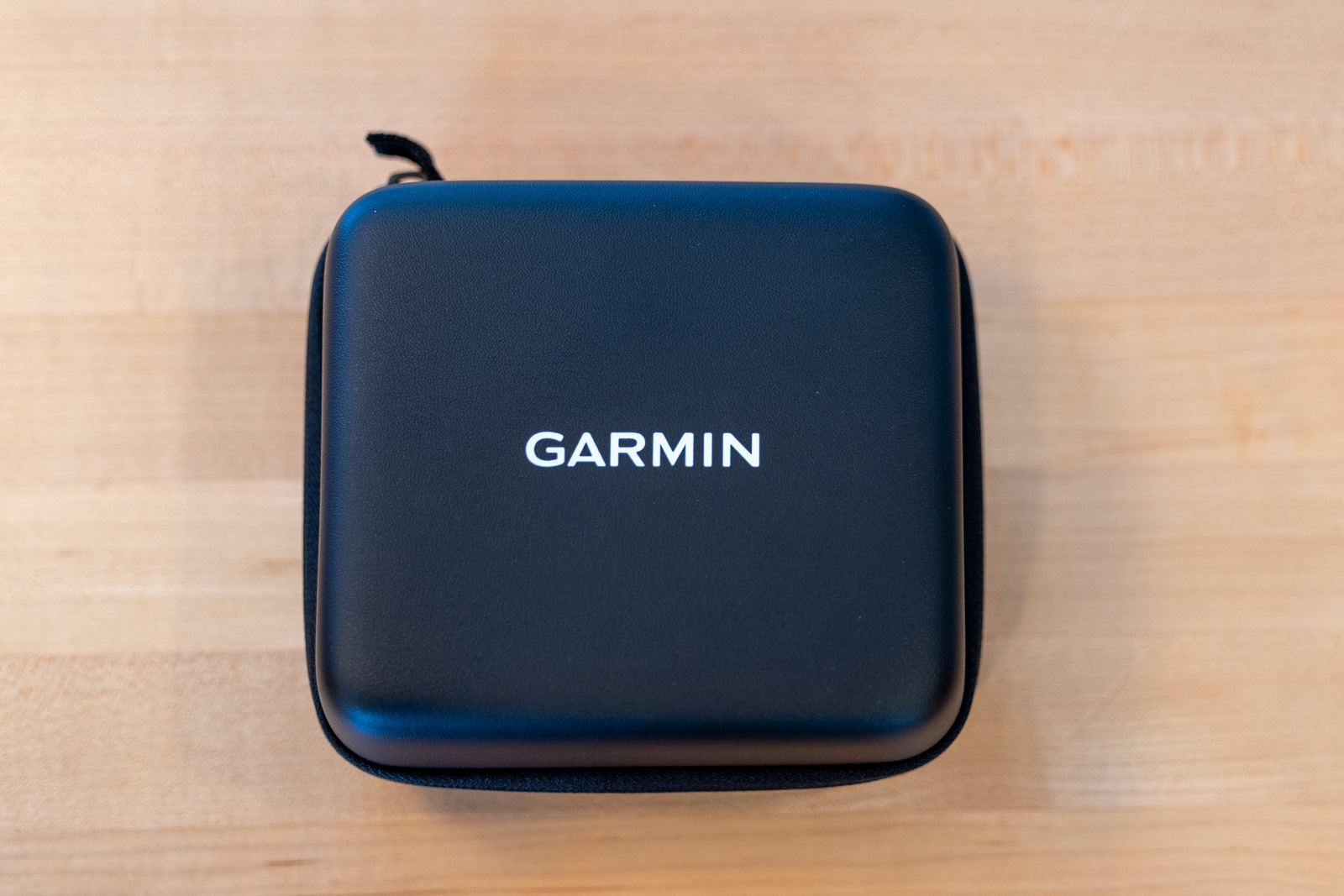
However, its carrying case remains bulkier than competitors like the Rapsodo MLM2PRO, making it slightly less convenient to throw in a golf bag.
A key accessory included with the R10 is its adjustable tripod, which provides a stable base whether on grass or pavement behind a mat.
Another bonus is the included phone mount, allowing for easy access to data on the range, something competing devices don’t offer.
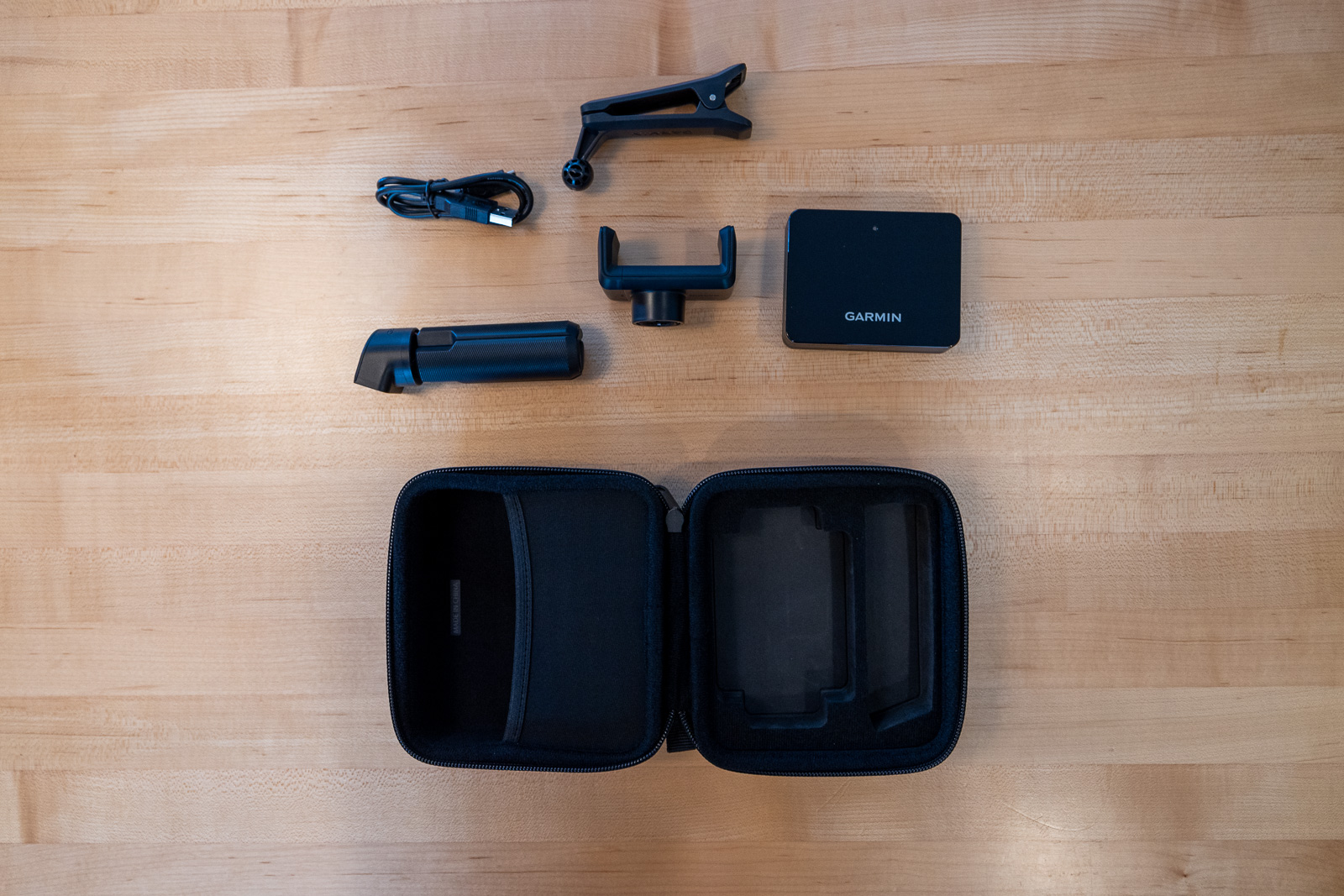
However, compared to the latest competition, the R10 is starting to show its age.
The Voice Caddie SC4 Pro has a built-in display, eliminating the need for a phone or tablet.
And the Square Launch Monitor’s package includes unique accessories like its Swing Stick (which I have some thoughts about.)
Then you’ve got advanced features like the built-in full-swing and slow-motion-impact cameras in the MLM2PRO.
In other words, we’ve seen improvements in the less-than-$1,000 golf launch monitor category.
Bottom line: The R10 still looks and feels premium, but newer devices are offering more convenience right out of the box.
The Garmin Approach R10 is hands down one of the very best launch monitors you'll find for under $1,000. Highly recommend.
Setting Up the Garmin R10 and Using the Garmin Golf App
From the start, one of the strongest selling points of the R10 has always been its ease of setup.
Seriously, you simply turn it on, pair it with the Garmin Golf app, and start hitting shots. It just works, and fast!
However, while the Bluetooth pairing is simple, the app experience is definitely getting long in the tooth. Garmin is just not keeping up with the advancements introduced by competitors.
With the release of the much higher end Garmin R50, I expected to see more major improvements here – but alas, we’re still waiting.
The Rapsosodo MLM2PRO, for example, has made significant improvements in its app, providing a more professional and polished experience.
Voice Caddie considerably revamped their app experience when they improved the original SC4 to become the new SC4 Pro.
So while the R10 is still quick and easy to set up, it’s once you start using the device with the app when the overall experience starts to feel a little dated and unprofessional compared to all of the options that are now available.
That said, none of the competitors can match the value of the overall Garmin ecosystem. The fact that you pay one $99-a-year subscription fee for access to all of the Garmin benefits, like stat tracking, shot data storage, and Home Tee Hero simulator courses access, and that you get those benefits on all of your Garmin devices is awesome!
I still think the overall ecosystem is one of the strongest selling points for any of the Garmin products, including the R10, as you can see in the video above.
Using the R10 on the Driving Range
If you’re like most golfers, the first thing you’ll do with the R10 is head to the range.
And like I said, the good news is that setup is incredibly easy. If you’ve paired the device before, you simply turn it on, open the Garmin Golf app, hit “Start Training’ and you’re good to go.
Once you’re dialed in, you can select your club and choose from five different display modes, depending on how much data you want to see.
The default view gives you a 3D shot tracer and three customizable stats.
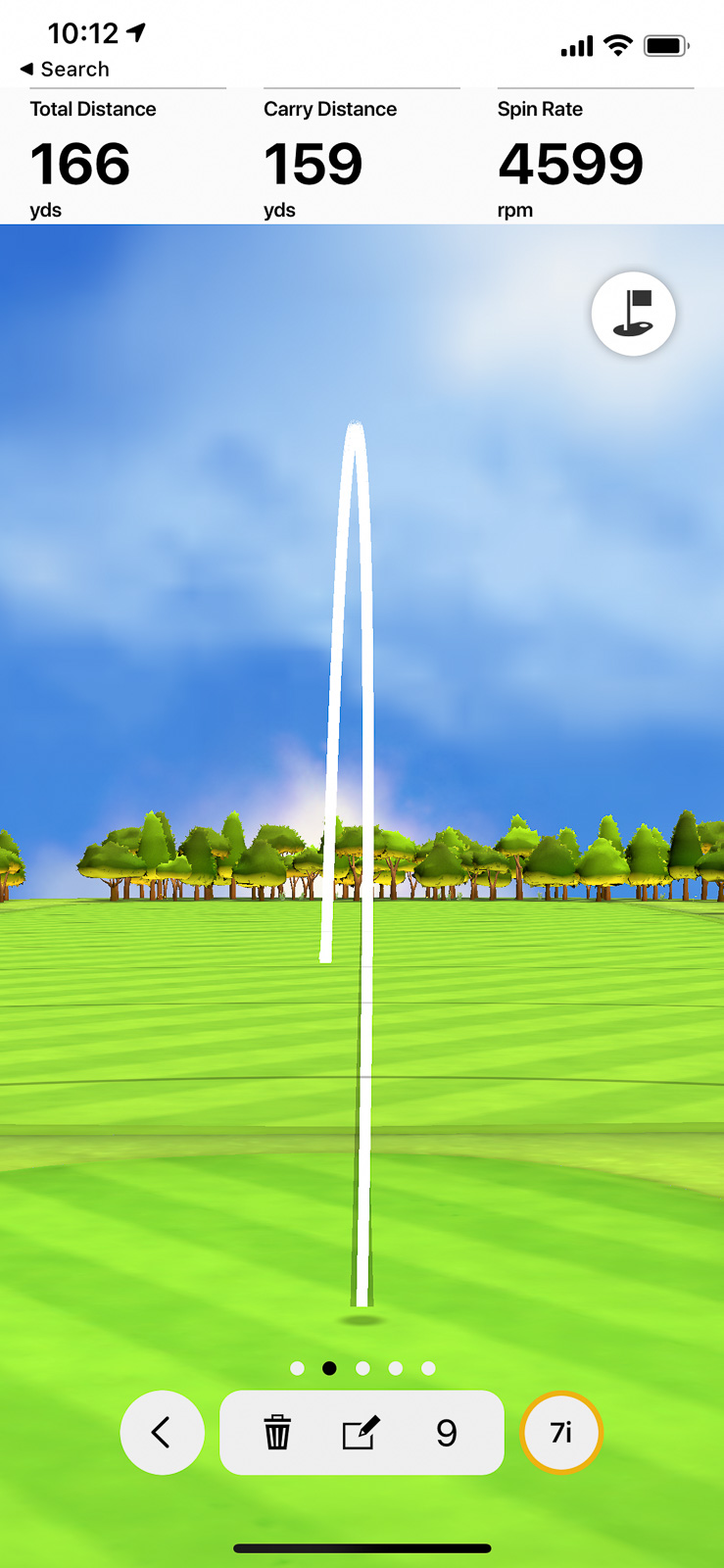
If you want to record your swing with an external camera, the Video Mode automatically saves clips of every shot, which you can review and annotate later.
There are also options to dive deep into stats like launch angle, spin rate, and shot dispersion. And you have the option to keep things super simple by displaying three key numbers in an easy-to-read format.
Personally, I don’t always love to be overwhelmed with advanced data. But knowing that every shot is automatically saved and that I can review my dispersion patterns over time is a huge plus.
For the range sessions, the included phone mount is a simple but underrated feature. It keeps everything easily visible, which is something competing devices don’t offer.
I do wish the R10 had Apple Watch integration, but it’s not a dealbreaker since I can still access everything quickly on my phone.
Garmin R10 Performance and Accuracy vs. the Competition
At launch, the R10 stood out for offering more data points than its competitors at that time. And even today, it remains one of the most metrics-rich sub-$1K launch monitors.
Those metrics:
- Clubhead Speed
- Club Face Angle
- Club Path Angle
- Angle of Attack
- Ball Speed
- Launch Angle
- Launch Direction
- Spin Axis
- Spin Rate
- Apex Height
- Smash Factor
- Carry Distance
- Total Distance
- Deviation Distance
The major caveat? Most of these data points are calculated rather than directly measured. Still, in my experience, the R10 was impressively accurate both relative to its price and to its competitors.
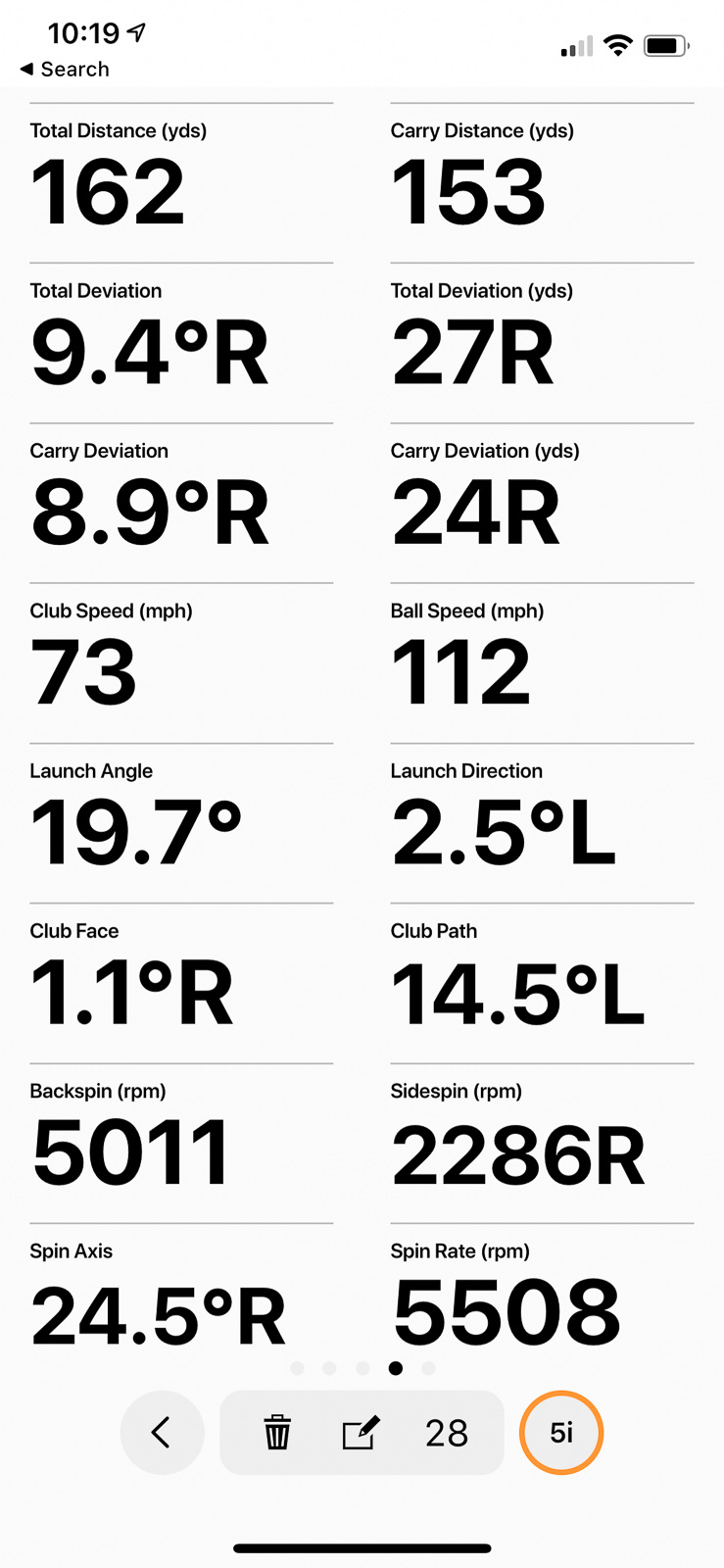
Again, when the R10 first came out, the accuracy for the price was totally groundbreaking.
And even though we now have other options, the R10 still hangs in there and goes toe-to-toe in accuracy with anything in the affordable launch monitor category.
One of my favorite features remains the shot history and dispersion tracking. Every shot is saved, and being able to visually track improvement is a huge advantage.
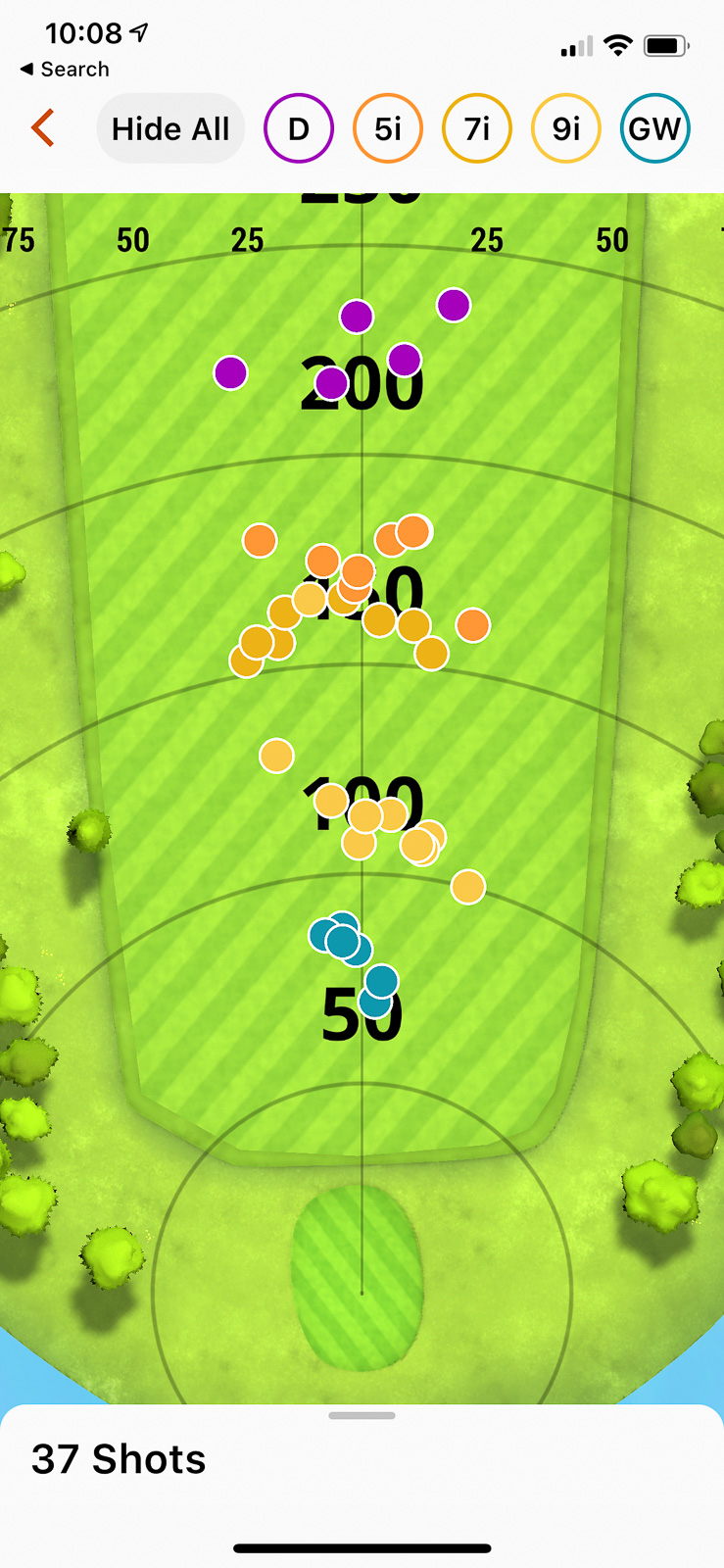
When compared to similar launch monitors, the R10 still delivers great value, but the competition has caught up.
The Rapsodo MLM2PRO offers built-in cameras for swing and impact video and a far more polished app experience.
The Voice Caddie SC4 Pro eliminates the need for a phone or tablet with its built-in display, plus it offers other attractive features like subscription-free E6 Connect access and built-in swing speed training.
And Square Golf offers a compact, high-accuracy photometric system for those who need an indoor-friendly option, also without subscription fees.
Things are advancing quickly in this space, and I think we’re seeing a combination of the R10 standing the test of time but also starting to show its age in certain aspects.
Simulator Features: R10 vs. Competitors
One of the biggest draws of the R10 is its simulator compatibility. Out of the box, the R10 includes access to five E6 Connect courses, along with compatibility with:
- E6 Connect
- E6 Apex
- GSPro
- Awesome Golf
- The Golf Club 2019
- Creative Golf
Plus, Garmin’s native Home Tee Hero software gives you cartoon or video-game-like graphics for more than 43,000 simulated golf courses from all around the world.
But to get Home Tee Hero or to use the R10 with those third-party options, you have to pay the $99 annual Garmin Golf membership.
That’s a reasonable rate, especially as I said if you’re all-in on the Garmin ecosystem.
But there are now more affordable and more flexible options.
The Voice Caddie SC4 Pro also includes five E6 Connect courses, but it doesn’t require an additional subscription.
And the Rapsodo MLM2PRO includes its own comparable virtual courses, but you can now unlock an MLM2PRO for life for a one-time $499 payment.
The Square allows users to pay per round of simulated golf with a credit-based system, eliminating the need for ongoing subscriptions. And Square doesn’t charge you extra to use their device with third-party software like GSPro.
So while the R10 is still a strong simulator option for the price, we’re now seeing packages that probably make more sense for a lot of users.
Using Home Tee Hero on the Garmin R10
Garmin’s own native simulator golf software, Home Tee Hero, can’t compete detail and graphics-wise with other options, but it’s not supposed to.
Home Tee Hero is more of a cartoon-like experience. The holes are generally shaped like the real thing, but the detail is lacking and the overall feel is more broad stroke.
Garmin did update their Home Tee Hero to add much greater detail and better graphics, but as of now, it’s limited to their new higher-end R50 launch monitor model.
But even with the older version on the R10, Home Tee Hero is still a ton of fun.
You can select literally any golf course in the world and play it out on the driving range or in your simulator studio.
And you know what? Even though it’s not the most advanced software relative to what’s come out since its debut, it’s still really enjoyable.
To be able to play your home course or another course you’re familiar with and see the same shot distances and forced carries as in real life is a lot of fun.
When the R10 first came out, I gushed about the Home Tee Hero experience. Because, once again, we’d never seen anything like it.
I can’t go so over-the-top in 2025 because there are other options now, including Rapsodo’s Courses solution, which is very similar in presentation and execution to Home Tee Hero.
Even if it’s starting to show its age, I still think Home Tee Hero is worthwhile and continues to add value to owning the R10.
Approach R10 User Experience: Where It Shines, Where It Comes up Short
In 2025, the R10’s user experience is a mix of industry-leading convenience and some noticeable areas where it’s beginning to lag behind.
I still like its simplicity. If you’re someone who values easy setup and hassle-free operation, the R10 delivers.
Another major win for the R10 is its shot tracking and data storage. Every session is saved in the Garmin Golf app. As we’ll discuss in a minute, when you look at a competitor like Square, that doesn’t store shot data at all, the R10 compares favorably.
And as noted, the tie-in to the data organization in the larger Garmin ecosystem and things like their golf watches, shot-tracking sensors, and smart rangefinders, makes the R10 experience somewhat timeless.
But as I’ve said, I think Garmin is overdue for an app experience update. I’d like to think it’s coming, but I felt the same way 4 years ago when the R10 came out, so….we’ll see.
Another frustration is that the R10 still lacks smartwatch integration. Garmin, of all companies, should be making full use of its own golf watches. But users still can’t view live shot data on their wrist.
Garmin R10 vs. Rapsodo MLM2PRO
The $699.99 Rapsodo MLM2PRO is likely the most direct competitor to the R10, which sells for $100 less at $599.99. And, because it’s been around longer, we often see the R10 go on sale for as low as $499.99.
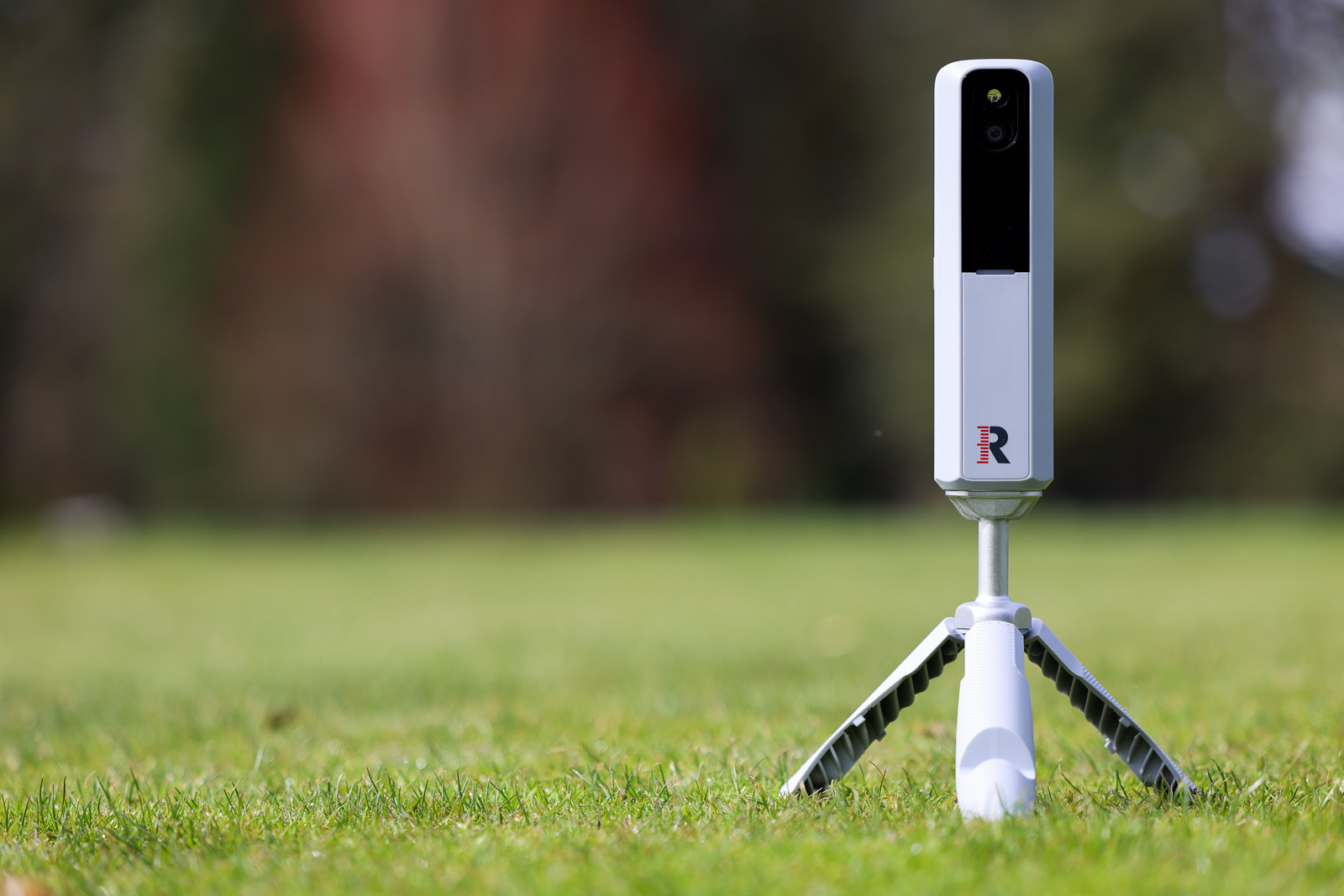
Both of these launch monitors rely on Doppler radar to gather data, though the MLM2PRO also incorporates a dual-camera system for more features and enhanced accuracy.
I have to say that Rapsodo’s app experience is better designed and more intuitive. They’ve also worked continuously to improve it, whereas Garmin seems content to just let their R10 app experience go unchanged.
That said, Garmin’s overall ecosystem that includes so many various products is much more robust than Rapsodo’s.
While the R10 retails for less, the one-time $499 lifetime membership with the MLM2PRO makes it less expensive for users who plan to own one of these devices for several years.
Another factor is ease-of-use. Because of its small size and the included phone mount, the R10 remains one of my favorites for convenience.
To me, if accuracy and a better app experience matter most, the MLM2PRO is the better option.
If price, the Garmin ecosystem compatibility, and simplicity are bigger priorities, stick with the R10.
Garmin R10 vs. Voice Caddie SC4 Pro
Voice Caddie recently introduced big upgrades to what was their SC4 model, now relaunching it as the improved SC4 Pro version.
And in doing so, they’ve made it an even stronger competitor to the R10.
Now with an overhauled app experience, more E6 courses included with purchase, and new swing speed training, the SC4 Pro is starting to provide a better value proposition for less money than the R10.
The SC4 Pro has a built-in display; something no other sub-$1,000 simulator capable device can boast.
And, along with the Square, it’s an affordable launch monitor that doesn’t include an annual subscription. That’s another advantage it’s got over the R10.
The new SC4 Pro model includes four additional data metrics that the original didn’t have: spin axis, side spin, backspin, and dispersion. That puts it closer in line with what the R10 delivers.
While I’d rate accuracy between these two devices as similar, I will give the nod to the R10 in terms of overall simulator software compatibility.
It’s great that both of these products come with E6 Connect courses. But beyond that, the Voice Caddie isn’t compatible with anything other than E6, whereas the R10 can work with a range of options.
If you want a screen and no subscriptions, the SC4 Pro is a great pick. If you want better simulator options, go with the R10.
Garmin R10 vs. Square Golf Launch Monitor
The Square is the newest competitor, offering the first optical-based launch monitor system under $1,000.
Because it’s the first-ever of its kind, it’s getting a lot of hype and attention similar to (but nowhere near the fever pitch of) when the R10 came out.
Like the SC4 Pro, there is no annual subscription required with the Square. Instead, they have a credit system where you can pay for simulator golf by the hole. It’s probably a money saver over time for most people, though I don’t like the mental reminder of knowing I’m paying a little bit more every time I want to play even a hole of simulated golf.
The R10, of course, requires the $99-a-year Garmin membership to use its best features. That’s actually a fair value when you look around, but there are a lot of consumers that are going to prefer the no-subscription option of the Square.
Being a camera-based unit that sits next to the golf ball, the Square is definitely a better option for indoor users who are tight on space. The R10, sitting behind the ball, will require a lot more room depth.
One of my biggest knocks on the Square is that there’s no option to store shot data for later review. So that’s a big win for the R10 in this comparison.
I think that if you’re using a launch monitor in a tight space, the Square is ideal. But if you want long-term tracking and app integration, the R10 wins.
Who Should Buy the R10 in 2025?
There’s no question that there are more solid launch monitor options now in 2025, than there were when the R10 launched.
And many of those will be a better fit for most golfers. But not everyone. The R10 still has it’s place.
I think casual golfers who want a simple, portable launch monitor that’s really flexible when it comes to playing simulator golf are still going to want to consider the R10.
And people who want an easy-to-use device to bring to the range are still going to find the R10 to be convenient.
Plus, the whole process of using this launch monitor is seamless. Yes, the app experience is dated, but it works flawlessly.
And as I keep saying, I think the real winners with the R10 in 2025 are the Garmin power users. If you’re in the Garmin camp, it’s always going to make sense to consider the Garmin version of whatever product class you’re looking at.
Final Thoughts on the Garmin R10 Personal Launch Monitor
When I first reviewed the R10, I was absolutely blown away.
Everyone was!
This product started a whole thing—affordable-but-stiill-accurate launch monitors—that is such a big part of the golf technology space in 2025.
But, like it always does, competition came along. Innovations and refinements continued.
The R10 paved the way, but its success also fueled competition, leading to new alternatives that, for many, may be even better choices in the affordable launch monitor category.
Still, the R10 has its place in 2025.
The Garmin Approach R10 is hands down one of the very best launch monitors you'll find for under $1,000. Highly recommend.
Recent Updates:
March 26, 2025: Full review update. Re-reviewed the R10 to assess how it currently sits in the market against new competitors from Rapsodo, Square, Voice Caddie, and more. Updated review score.
November 2023: Updated the review to make comparisons to the new Rapsodo MLM2PRO
This page contains affiliate links. This means that if you click a link and buy one of the products on this page, we may receive a commission (at no extra cost to you!) This doesn’t affect our opinions or our reviews. Everything we do is to benefit you as the reader, so all of our reviews are as honest and unbiased as possible.
One of the Best Launch Monitors Under $1k
Even a couple years after it's release, the Garmin R10 continues to be a really compelling product. If you're in the Garmin ecosystem already, this is a no-brainer. It may not have the dual camera system of the MLM2PRO, but it's less money, and the subscription isn't mandatory. Highly recomemended.
The Good
- Looks great
- Garmin Golf Membership works across all Garmin products
- Free mobile e6 access works great
- Lots of metrics and surprisingly accurate given the price
The Bad
- Other new products are more feature heavy for similar money
- Uses algorithm rather than directly measuring most metrics.
- The app experience is in desperate need of an overnaul
-
Presentation
-
Performance
-
Quality and Features
-
Price
-
Personal Affinity

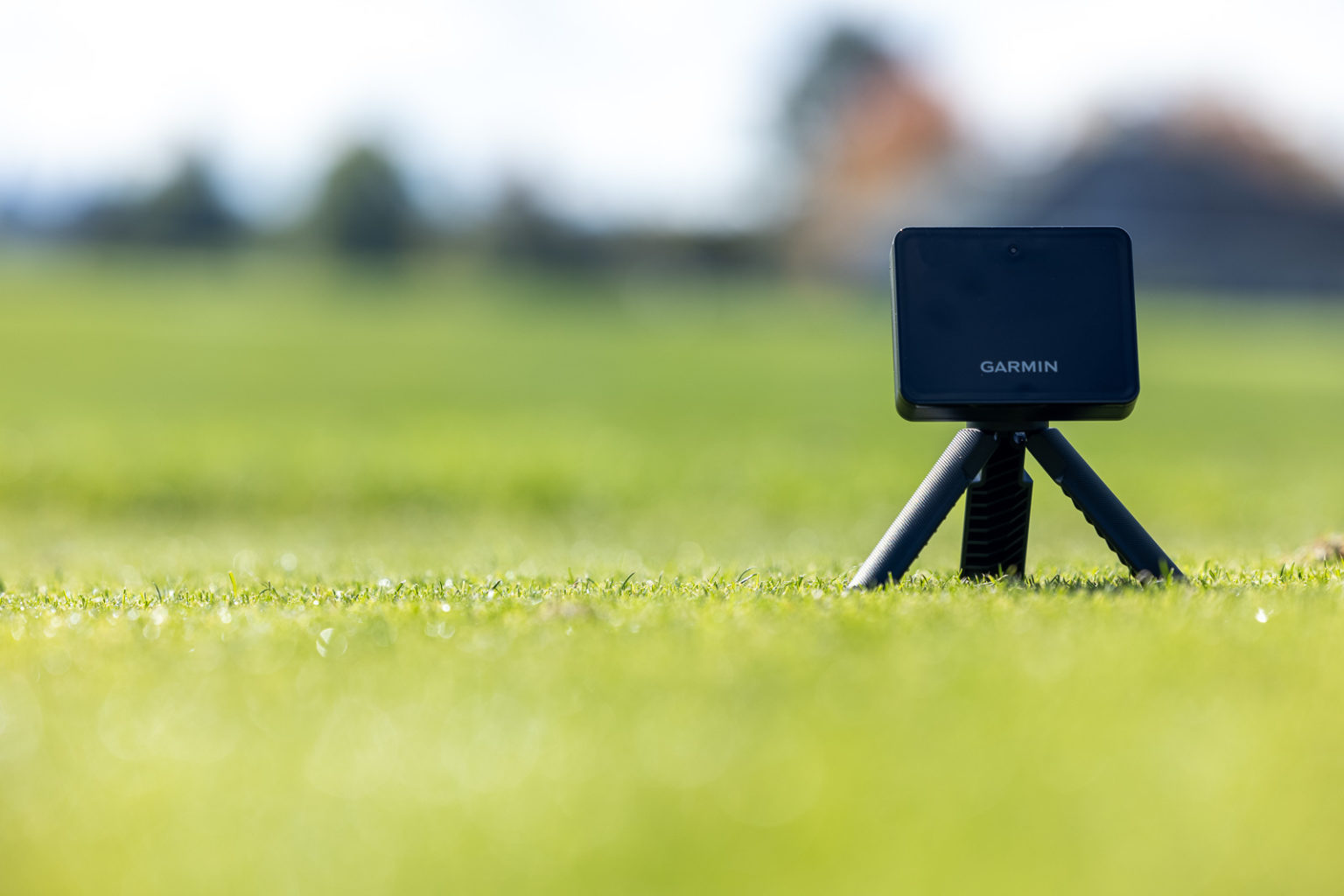
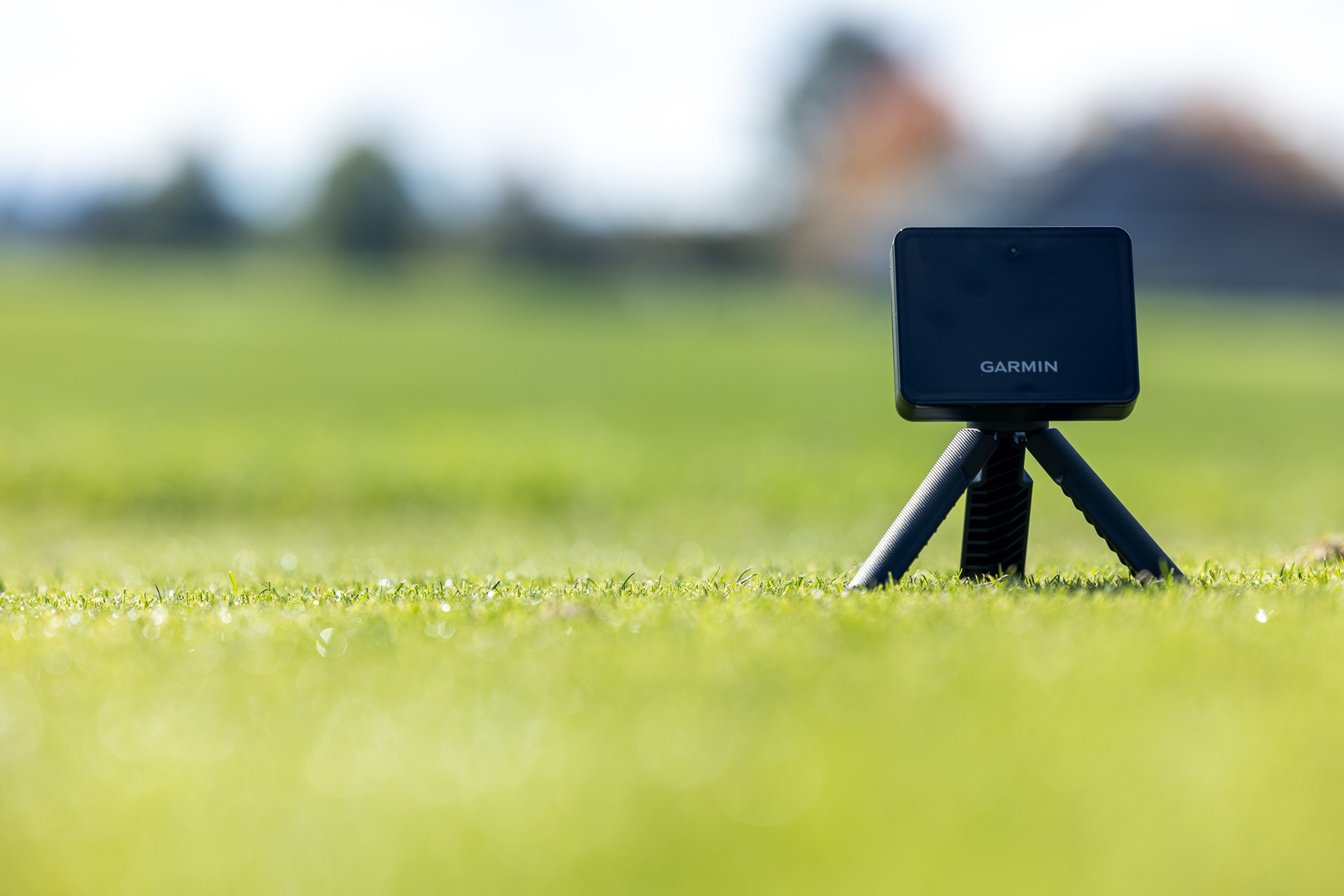
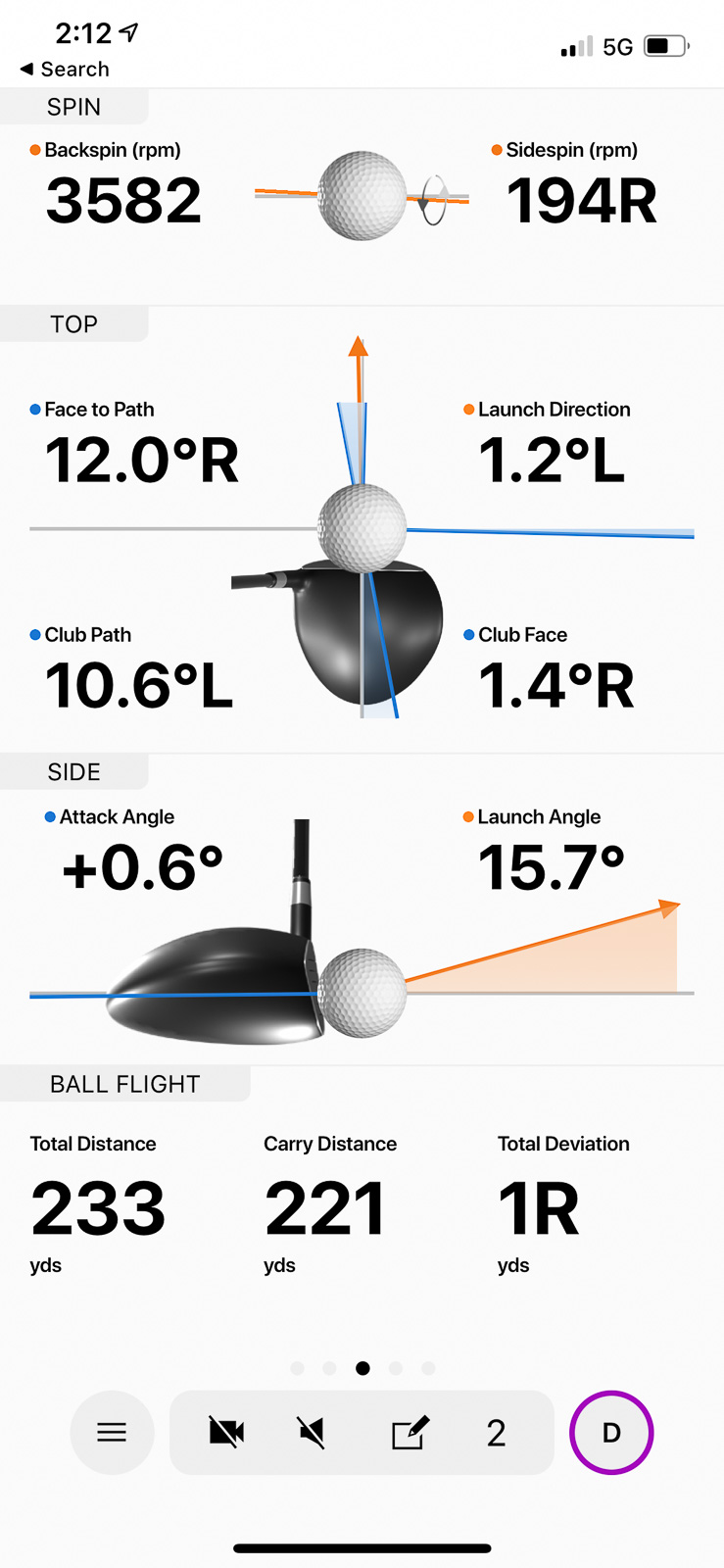
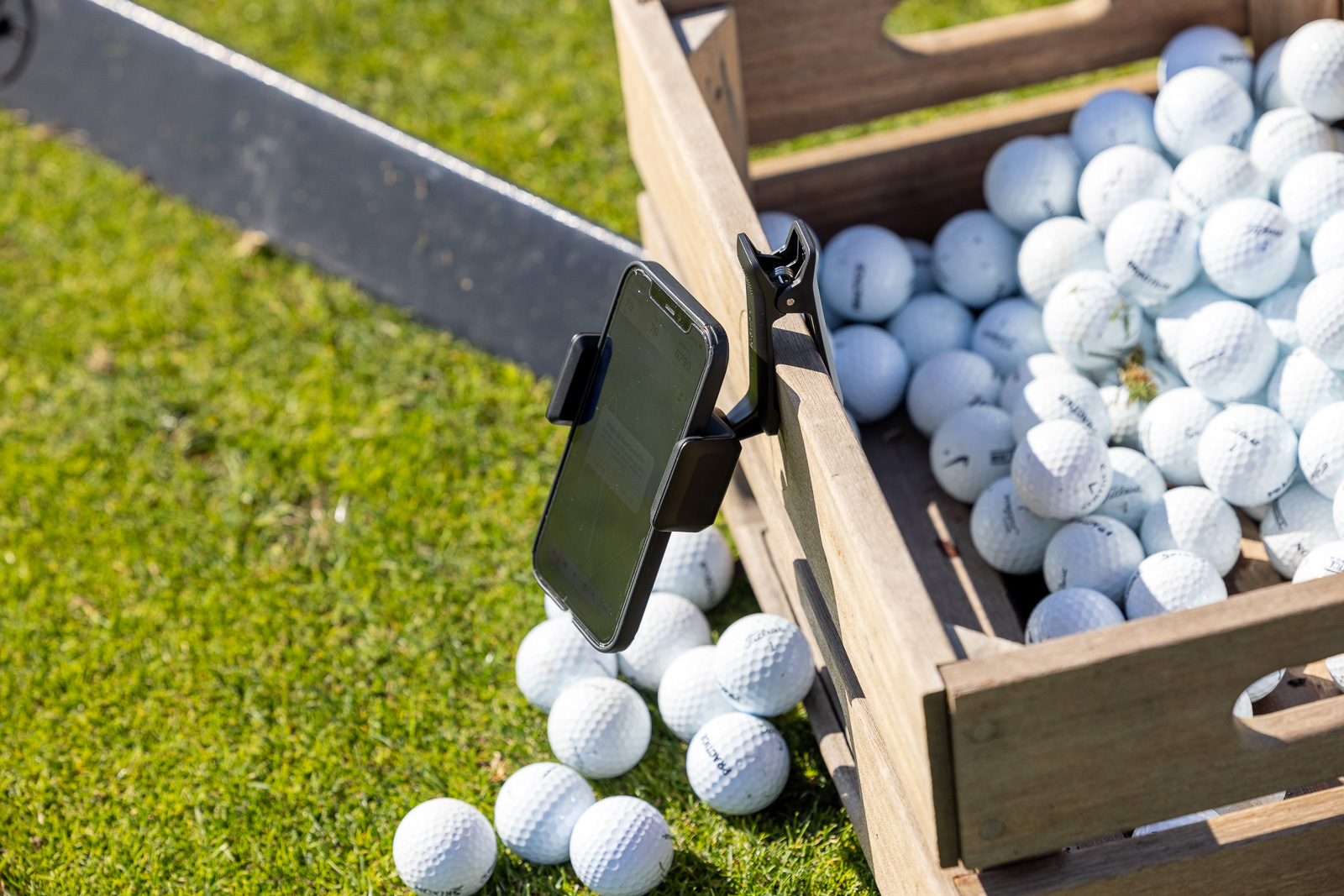
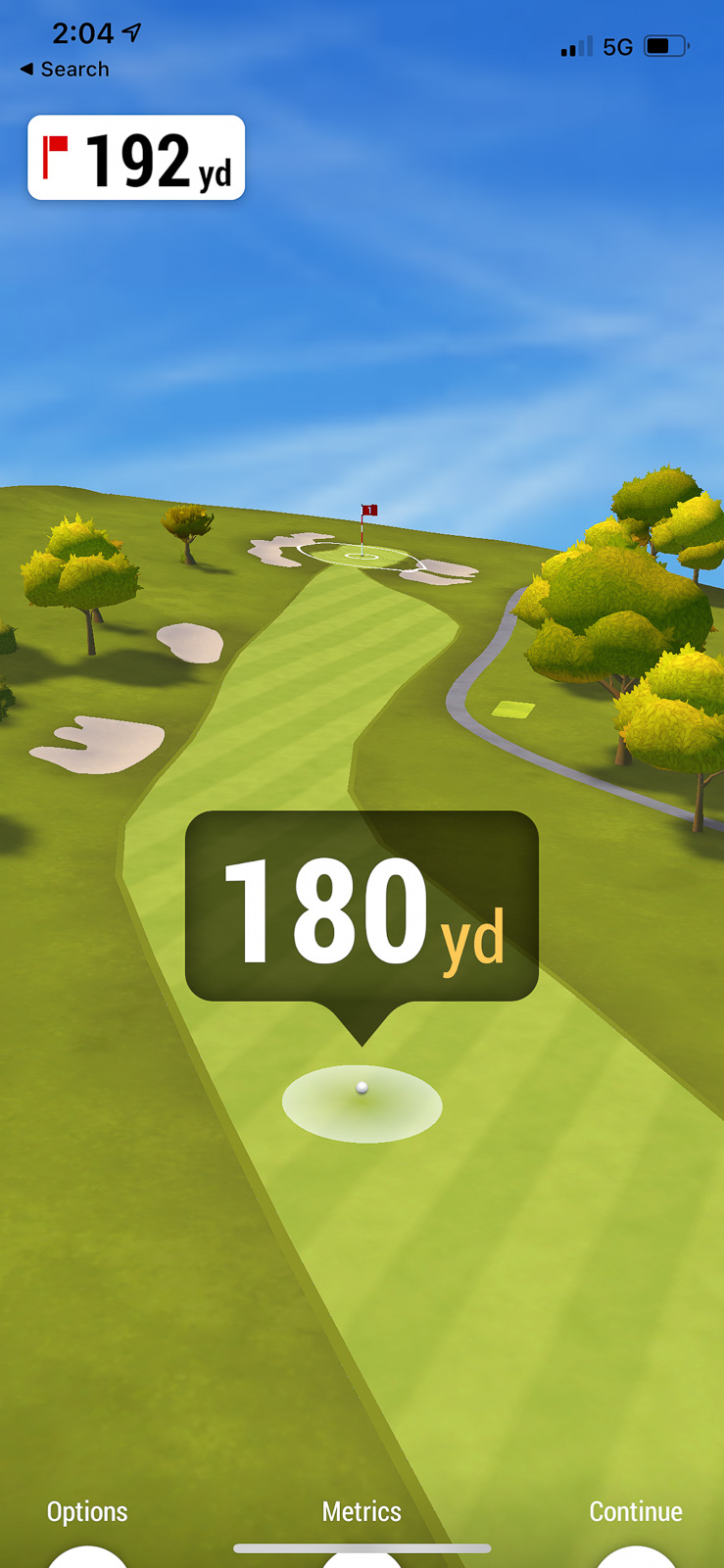
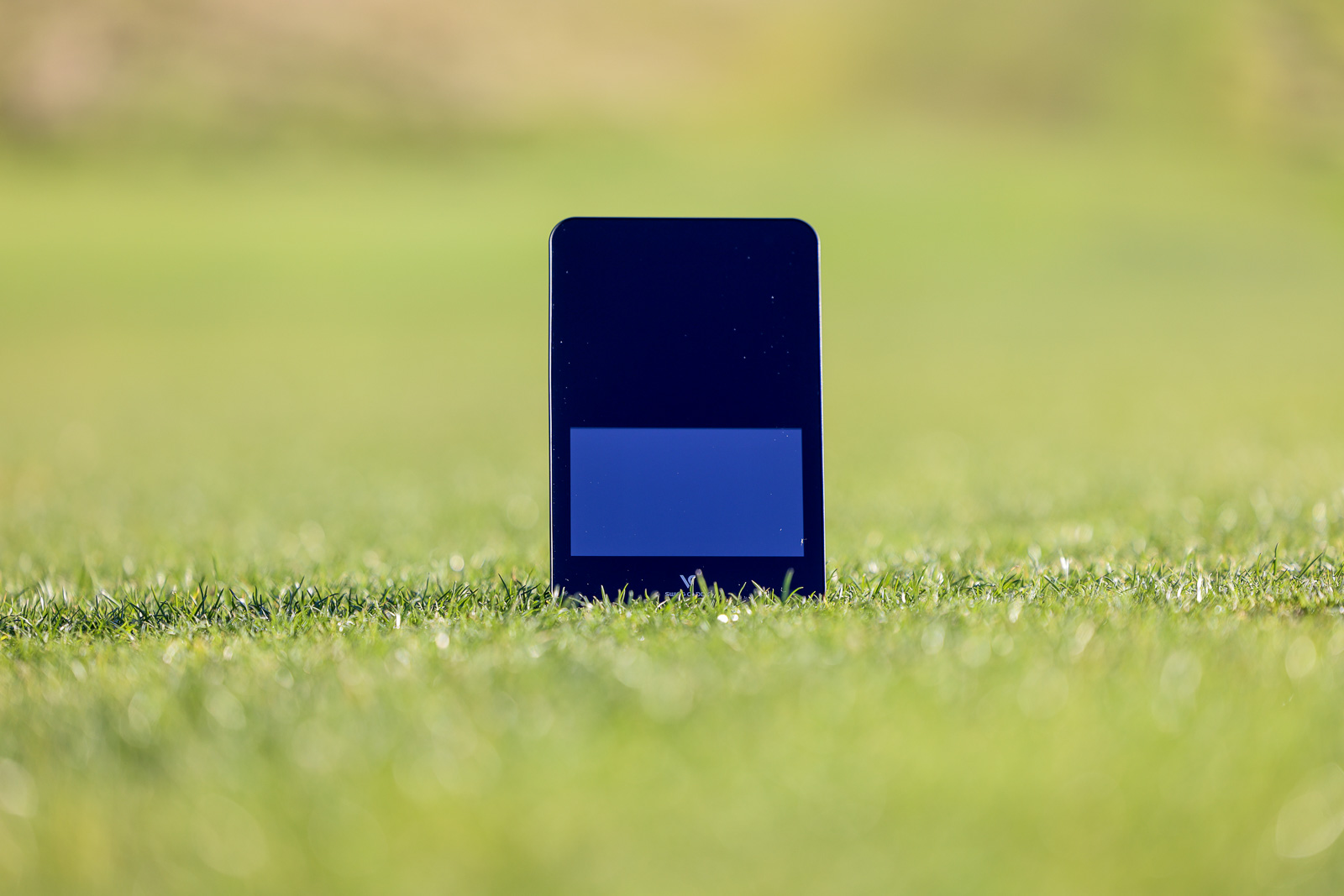
5 Comments
I would try disconnecting your phone and then connecting your iPad. I’ve had that issue with some cheaper headphones where you have to make sure they are disconnected from the previous device.
First off what a great review. Sean has described everything I have been through with mine. The kit is brilliant, and the data is as immersive as you need it to be and the arghhhh factor when you open it.
Pairing on the iPad can be a pain but when I did it I just installed a new device through the app but the pairing mode takes a bit to get right or just pair it straight from the box to your iPad. The other thing is when registering for E6 make sure you do it on the device you want to use it on as the licence is attached to the device. My phone was too small and it took a while to work out how to transfer to my iPad.
I would say if you are considering this as a purchase…..you won’t be disappointed
Finally a review that answered a burning question for me: can you play the free e6 courses without paying for the premium Garmin membership. Thank you! Also could you tell me: how accurate is the device outdoors into a garden net? Stuck between going for the r10 and the voicecaddy sc4. Thanks dude!
Has Garmin updated the R10 for use with the S70? I was originally going to get the SC4 with its display until I realized it doesn’t calculate shot shape which would be less than ideal hitting into a net. Now that I have come to terms with needing to use a separate display it would be a no brainer if I could see R10 data on my S70 since I am in the Garmin ecosystem for a number of activities. But if I need to use a phone regardless the MLM2Pro still seems interesting with its cameras, but I don’t like its subscription model.
Someone just recently told me it does. Actually hoping to get out with both the r10 and the s70 this week to test.